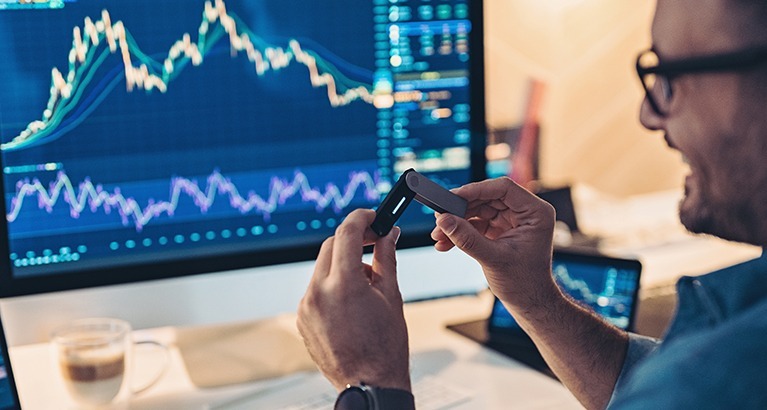
Understanding the Risks and Rewards of Crypto Margin Trading
Crypto margin trading has gained significant popularity in the cryptocurrency landscape, allowing traders to utilize borrowed funds to increase their trading positions. However, with this opportunity comes an equally significant risk. In this article, we will delve into the complexities of crypto margin trading, the potential rewards, the inherent risks, and strategies to optimize your trading experience.
For those interested in innovative projects that look to enhance trading experiences, take a moment to explore this fascinating Crypto Margin Trading https://medium.com/mousebelt/university-pitch-competition-winner-edunode-18c48a09d609.
What is Crypto Margin Trading?
Crypto margin trading allows traders to borrow funds from a broker or an exchange to trade larger positions than they would be able to afford with their own capital alone. This practice amplifies both potential gains and potential losses, as traders are effectively taking on leverage. The value of the borrowed funds is used in conjunction with the trader’s own capital, which is known as margin.
The Mechanics of Margin Trading
The fundamental principle behind margin trading is leverage. Leverage is expressed as a ratio, such as 2:1 or 10:1. If a trader uses 10:1 leverage, for instance, they can control $10,000 worth of cryptocurrency by using just $1,000 of their own capital. This can magnify profits but also heightens risks substantially.
How Leverage Affects Returns
To understand how leverage can significantly impact returns, let’s consider a practical example: if the price of Bitcoin rises by 10%, a trader who invested $1,000 without leverage would see their position value increase to $1,100, yielding a profit of $100. Conversely, if the same trader had used 10:1 leverage, controlling a $10,000 position with $1,000 of their own capital, a 10% increase would result in a position value of $11,000. The profit in this case would be $1,000, resulting in a 100% return on the trader’s initial capital.
Risks Involved in Margin Trading

Despite its appealing prospects, margin trading carries substantial risks, which every trader should thoroughly understand before engaging in such activities.
Liquidation Risk
One of the most critical risks associated with margin trading is liquidation. If the market moves against a trader’s position, a broker has the right to liquidate the trader’s holdings to cover the borrowed amount. This means that even if the trader can recover later, they could incur significant losses upfront.
High Volatility
Cryptocurrency markets are notorious for their high volatility. Prices can swing dramatically in short periods, leading to potential rapid losses for traders using leverage. In a fast-moving market, managing positions becomes exponentially more challenging.
Emotional Trading
The psychological aspects of margin trading can be daunting. The amplified potential for gains can lead to reckless trading behavior, while equally, the fear of substantial losses can paralyze decision-making. Traders should maintain discipline and adhere to a well-defined strategy to counteract these emotional influences.
Effective Strategies for Margin Trading
To navigate the complexities and risks of margin trading successfully, traders can employ various strategies that can enhance their chances of achieving consistent profitability.

Risk Management
A solid risk management strategy is paramount. This includes determining a maximum risk per trade, setting stop-loss orders to protect capital, and avoiding over-leveraging. Many seasoned traders recommend only risking a small percentage of total capital on a single trade, usually around 1-2%.
Technical Analysis and Market Research
Conducting thorough technical analysis and staying updated with market trends can provide traders with an advantage. Utilizing tools like charts, patterns, and market indicators can guide trading decisions and help in identifying entry and exit points.
Diversification
Diversifying trading positions in different cryptocurrencies can reduce risk exposure. Instead of concentrating all capital in one asset, traders may spread investments across various currencies to mitigate potential losses from individual positions.
Selecting the Right Trading Platform
Choosing a reputable and reliable platform for margin trading is crucial. Traders should consider factors such as fees, ease of use, available leverage options, security features, and customer support. Popular exchanges that offer margin trading include Binance, Bitfinex, and Kraken, each with its unique features and benefits.
Conclusion
Crypto margin trading presents an exciting opportunity for traders who are willing to embrace the associated risks. With the ability to amplify potential gains comes the responsibility to manage risks effectively. By adhering to disciplined trading practices, employing risk management strategies, and continuously educating themselves on market trends, traders can navigate the volatile world of crypto margin trading successfully. Remember, while the prospects can be enticing, understanding the mechanics, risks, and strategies associated with margin trading is essential in ensuring long-term success in the crypto market.
